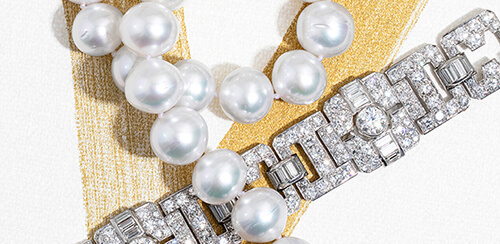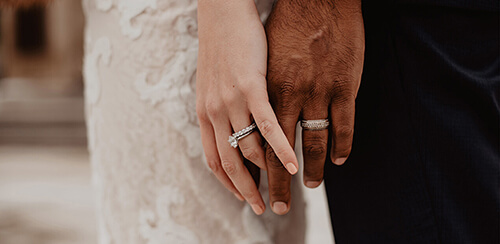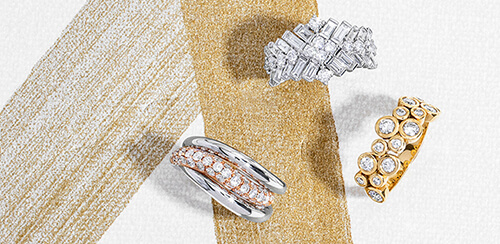Toggle Nav
DIAMOND - THE 4 C'S: CLARITY
19/04/2022
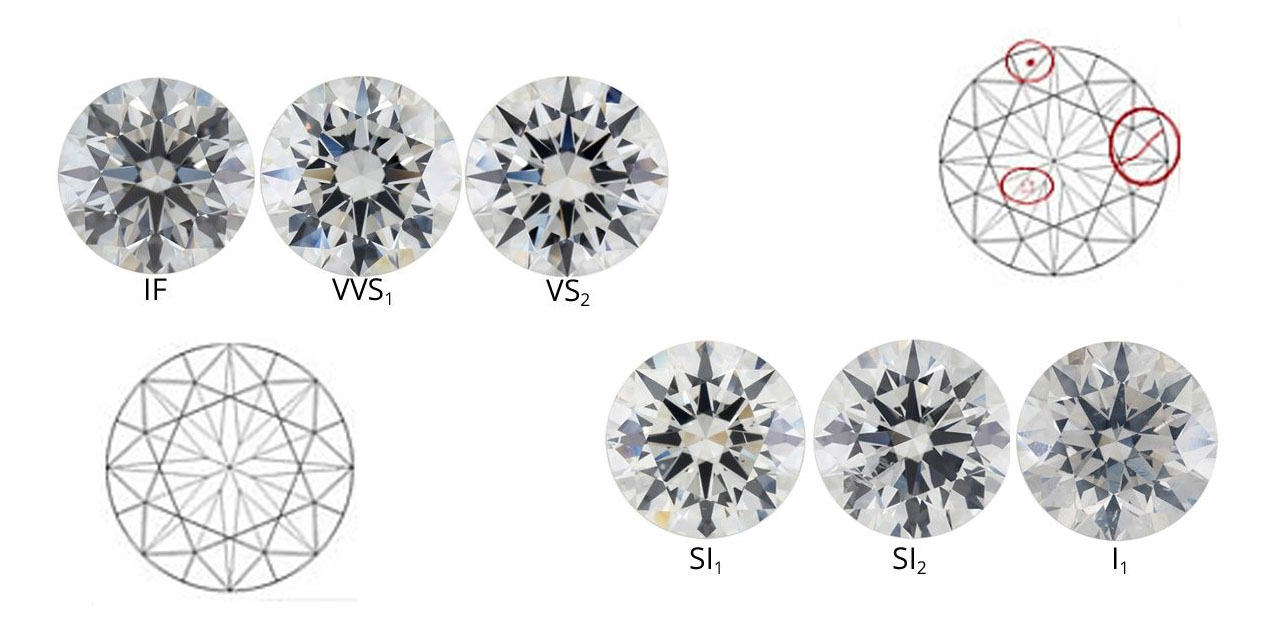
Clarity is a gemstones relative freedom from clarity characteristics, which are classified as inclusions and blemishes. Inclusions are enclosed within a diamond, or they can extend into the diamond from its surface. Where blemishes are confined to the diamonds surface only. Inclusions have more influence on a stone’s clarity grade than blemishes. Clarity characteristics make every diamond unique. As it’s extremely unlikely that two stones would have the exact same characteristics in identical locations.
The five factors for determining overall effect on a clarity grade are Size, Number, Position, Nature and Relief.
The effect of size is obvious, larger inclusions affect clarity more than small ones. However, the number of inclusions is also important, but it’s not just a matter of counting them. A stone can have many tiny inclusions and still be high on the clarity scale. One or two of the largest inclusions usually set the grade. An inclusions position affects visibility. Cutters call the area right under the table the “heart” of a stone. Inclusions are generally much more visible there than they are under a bezel facet or near the girdle of the stone. An inclusion might be small and in an inconspicuous place. But if it’s reflected in the pavilion facets, it can look like many inclusions, not just one. Reflectors lower a clarity grade more than similar, non-reflecting inclusions.
The nature of a diamond’s inclusions also influences its clarity grade. Large breaks in the stone, or feathers, are potentially hazardous, especially if the reach the table or extend from the crown through the girdle. Relief means contrast or visibility. Most inclusions are white or colourless, some can be black - carbon that didn’t form as diamond-, brown, dark red or green - these can be other materials or even other gems that form in the same locations and conditions that diamonds form under; Garnets are one such stone and can become trapped within a growing diamond crystal. The dark inclusions are usually easier to see, so they have greater impact on the clarity grade than colourless inclusions. However, to the right customer born in January whose birthstone is Garnet, it might be a beautiful bright red or green garnet that became trapped within a forming diamond that may result in a particular desire for a stone to a customer, rather than the importance of it being a higher clarity grade that they originally thought that was of importance. Clarity should not be analysed by these factors separately. As during the grading process, they are considered all together when determining a clarity grade.

Instead ask to see the stone you are most interested in under some magnification if it’s going to influence a purchasing decision, if you can see it clearly under x10 magnification, however when then viewed to the naked eye, if it’s not that noticeable, does it affect the appeal or beauty of that particular stone to you? Only you as the consumer can determine whether the presence or absence of a particular characteristic, then means “your stone” is then readily identifiable because of the characteristics Mother Nature created within that stone, or whether indeed you would then prefer a higher clarity graded stone, or whether you would prefer to have the rarest of all a Flawless or internally Flawless stone?
The 5 main clarity grades normally have a higher and a lower tolerance for inclusions, giving us the 11 final clarity grade potentials, apart from I or PK clarity grades which has 3 levels. Important to note is GIA graded diamonds are assessed under lab conditions with 10X magnification by skilled graders for all clarity grades, (they can then go up to around 60X magnification for really scrutinising a particular characteristic, if interested in finding out what the nature of said characteristic might be) but final grade is still done at 10X , and done by 2 different graders, neither of which would know if they are the first or second grader of a given stone.
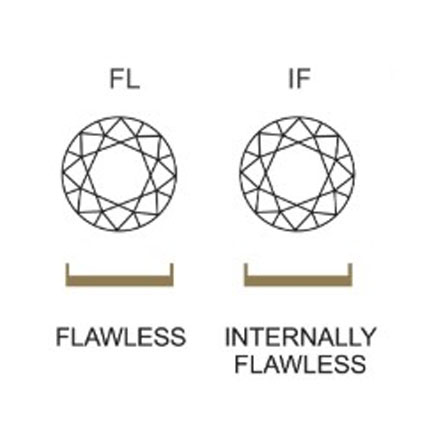
So, starting at the top with Flawless, is as it describes a stone with no characteristics within the stone. Internally Flawless means the stone is completely free of inclusions, but it is likely to have a blemish somewhere, these are allowed to be/most likely an extra facet on the girdle of the stone - this may have been done to remove a pinpoint or other minute characteristic that would have otherwise resulted a VVS stone- or it can be a “natural” this is the remnants of the original rough diamond crystal skin. This level of perfection in something Mother Nature created is normally only revered by the most discerning of customer who desire the most perfect of clarity of stone, and may want to be known as the purchaser of such a rarity and bringing it into the family collection of jewellery, as a statement piece or an heirloom piece to be passed down through the generations.
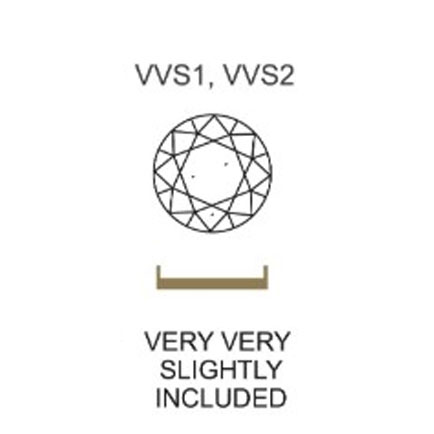
Very Very Slight Included, VVS1 and VVS2 contain minute inclusions that range from extremely difficult (VVS1) to very difficult for a skilled grader to see under 10x magnification. The inclusions in a VVS1 are extremely difficult to see in the face up position or might only be visible through the Pavilion. In VVS2 they are very difficult to see. For a stone to achieve this grade the characteristics would be identified as pinpoints on a certificate, on a VVS stone it might even have a little surface blemishing but nothing that affects beauty or is visible from above. This level of clarity is very highly prized by collectors of as near perfection as possible, and for certain cuts like an Emerald cut or step cut stone is most desired. Simply because in a lower grade of this type of cutting characteristics can often be seen even without magnification.

Very Slight Included, VS1 and VS2 contain minor inclusions that range from difficult (VS1) to somewhat easy (VS2) for a trained grader to see under 10x magnification. Typically, inclusions are small crystals, feathers or distinct clouds (a cluster of pinpoints in a single area within a stone) additional random pinpoints can be noted separately on a certificate, but won’t necessarily diminish the grade. If interested ask your diamond professional to locate the characteristic in this clarity grade of stone for you & see if you can see it with the aid of magnification. VS level means you can’t see the characteristics unless aided with magnification, this level & above are revered by the more discerning customer who’s wants something nearer to perfection without being able to see anything unless with magnification.

Slightly Included, SI1 and SI2 contain noticeable inclusions that are easy (SI1) or very easy (SI2) for a trained grader to see under 10x magnification. Typical inclusions are crystals, feathers and clouds. A stone with an eye visible inclusion can be graded SI, but in general the characteristics in SI1 diamond are not usually visible face up without magnification. You’ll see eye visible inclusions more often in an SI2 stone. If interested ask your diamond professional to locate the characteristic in this clarity grade of stone for you and see if you can see it both with and without the aid of magnification. SI clarity is a good representation of a value for money stone, if you want a sone with a bit of size and don’t mind compromising a bit on noticeable clarity.

Included /PK clarity as sometimes described but not by GIA, I1, I2, and I3, diamonds that fall into this range contain inclusions that are obvious to a trained grader under 10x magnification. The inclusions in I1 are usually quite visible to the unaided eye. In I2 they are easily visible. In I3 they are extremely easy to see and might affect the stones durability. For example, in an I3 clarity stone with large feathers within the stone were to receive a hard knock in the right direction during setting or wearing, it could cause the diamond to break along this cleavage plane. These stones fall under the category most often known as “flash for cash” where only an impressive size is desired and the compromise to achieve a price point, is the beauty of a clear stone. Often small accent stones in affordable or low-end designer pieces where they are merely to look like white stones to complete a piece design might fall into this category.


